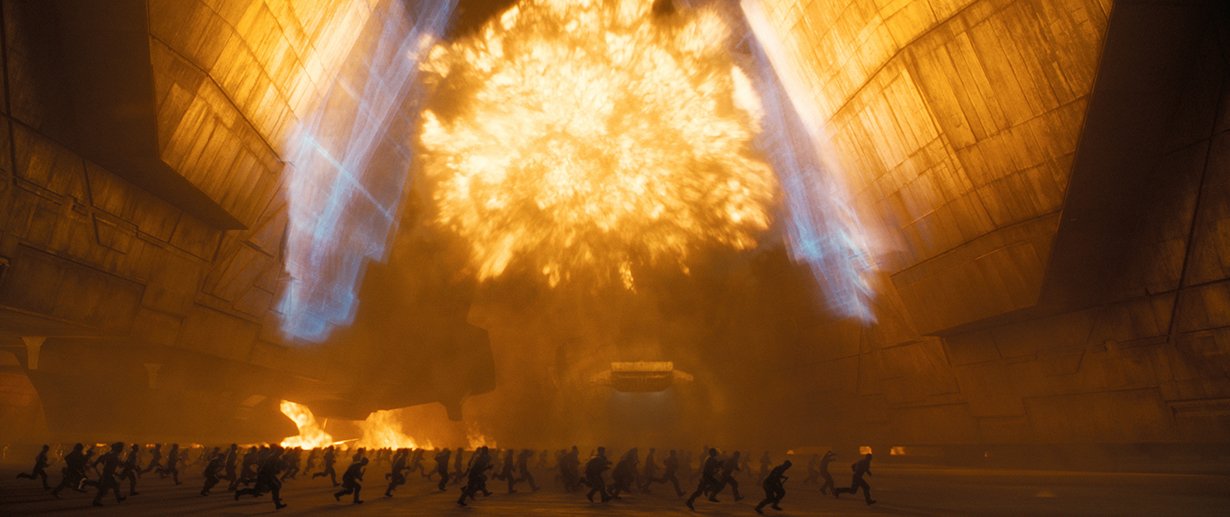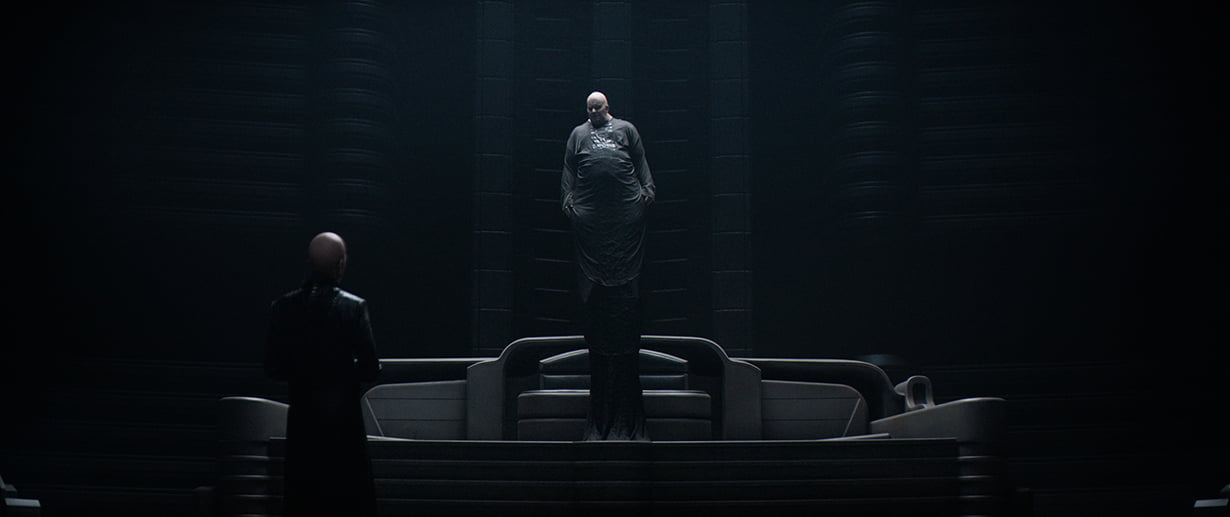Imagined for the big screen by Academy Award-nominated filmmaker Denis Villeneuve, “Dune” is based on Frank Herbert’s 1965 novel.
“To me, ‘Dune’ is a psychological thriller, an adventure, a war movie, a coming-of-age movie. It’s even a love story,” remarks Villeneuve, who at last is able to fulfill his lifelong dream of bringing the landmark work with its complex mythology to life. “There’s a reason the book stayed on my shelf, beside my bed, all those years.”

Set thousands of years in the future, “Dune” tells the story of Paul Atreides, a young man propelled by fate into an intergalactic power struggle. The son of beloved, embattled ruler Duke Leto and powerful warrior priestess Lady Jessica, Paul will be given the ultimate test: to conquer his fear when fate—and powerful unseen forces—pull him inexorably to the sands of the remote planet Arrakis.
Arrakis—home to an indigenous human civilization called the Fremen and known to these natives as Dune—has been fiercely contested for generations. Humanity fights for control of the Spice, a rare, highly valued, mind-expanding natural resource upon which space travel, knowledge, commerce and human existence all rely. But those seeking to harvest the Spice must survive the planet’s inhospitable heat, hurricane-strength sandstorms, and monolithic sandworms that are justly feared with the kind of reverence usually reserved for gods.

The film was shot in Hungary, Jordan, Abu Dhabi and Norway, where Villeneuve and his team of artisans, including director of photography Greig Fraser and production designer Patrice Vermette created their very own remote planets.
Planet Arrakis is a vast desert world of infinite horizons and desolate beauty. To capture Villeneuve’s singular vision, his creative teams—led by director of photography Greig Fraser and production designer Patrice Vermette—worked to capture as much in camera as possible. That meant foregoing a green screen and creating the director’s ideal Dune on Earth, on the soundstages and backlot of Origo Studios in Budapest, Hungary and on location in Jordan, with about a week in Abu Dhabi before wrap.
The director states, “One of the things we decided first of all was we would use the IMAX format for entire sections of the film, such as Paul’s visions, the dreams and the desert sequences. The rest we would shoot in 2:35 format. To maintain the visual impact of IMAX on audiences, it was also beneficial to step away from it from time to time. We also decided the desert scenes would be filmed with a handheld camera, but the rest of the world would be more like tableaus, so that’s the way we approached it.”
“From a color perspective,” he continues, “we tried a number of ideas. Denis wanted Arrakis to be harsh and desolate, unwelcoming to outsiders. So, we tried to never make the sky blue. There’s lots of desert photography where there is yellow sand and blue sky, and we leaned away from that and went toward washed out sand and white sky.”
Fraser says they also had early extensive conversations about whether to shoot digitally or on film. “Film is a beautiful format with an undeniable quality that’s stunning, and it’s analog and it has a certain humanity and warmth to it,” he relates. “But, in this case, we felt shooting on the Alexa gave us the warmth and the humanness the story required but without the nostalgia you get from film.”
Among the sets built at Origo Studios were the interiors on planet Caladan, where the film begins. These included the vast library where Lady Jessica and Reverend Mother Mohiam discuss Paul’s future and the residence where the Atreides family lives. They also built the steam bath on Geidi Prime, where the Baron Harkonnen is when we first meet him. Some exterior scenes, including the ornithopter landing on Arrakis, were also filmed on the backlot there. A team of some around 1,000 people made up the expert crew.
Vermette designed the color palette of Caladan to be primarily hazy autumnal greens, grays and blues, giving the impression of constant rain and humidity. Castle Caladan is built into a mountain representing House Atreides’ complete synchronicity with nature. Those mottled hues give way to the stark browns, ochres and arid reds when the story moves to Arrakis. Giedi Prime, meanwhile, is a place of industrial plastic matter.

One of the most ambitious designs Vermette created was the ornithopters, the huge winged flying vehicles that grace the skies of ‘Dune.’ Working with concept artist George Hull and Ornithopter art director David Doran, Vermette came up with a design.
“The ornithopter is a ship that flies like a bird,” explains Vermette. “It has wings, which it flaps very fast, like a hummingbird or a dragonfly. The wingspan is 129 feet and it’s 75 feet long. My references were birds, insects and helicopters. The design mutated as we started designing the world of the film, which is very angular and brutalist. They had to be believable, that was essential to the storytelling of the world of the film. It was quite an engineering feat to create a machine that would be fit for purpose. BGI, a prop-making firm in London, built them and they were delivered to us in Jordan.”
Transporting the two ornithopters—a large one at 75 feet and a smaller at 48 feet—was a logistics challenge. Vermette insisted that they travelled in one piece to avoid having to put them back together on set. It would have also weakened the structure of the ornithopters, which needed to be lifted with cranes, with actors or stunt performers inside.

The production hired an Antonov plane, one of the largest available transport aircrafts, on which the nose opens up to transport the set pieces. From there, they were driven to the sets. Once there, the machines, totaling some 10 and two tons, respectively, were moved by cranes and mounted onto specially designed go jack dollies for the flight scenes.
At the same time, back in Origo studios, two versions of the ornithopter cockpits were constructed: one model was hoisted onto a gimbal rig on a stage; the other was put on a gimbal rig on a hilltop in Fót just outside Budapest.
The team spent about four weeks in Wadi Rum in Jordan. Controlled and protected by the different Bedouin groups who live there, Wadi Rum, also known as Valley of the Moon, is an other-worldly landscape cut into granite and sandstone rock in southern Jordan. It provided the breathtaking locations for some of the exteriors on Arrakis, as well as some of the visual effects and helicopter aerial shoots.
The spectacular vistas are not the only reason Jordan makes such a great location for filmmakers. “There are very experienced people here for scouting and for location management,” says Villeneuve. “The organization and management we had was fantastic: all the desert roads were mapped, everything is state-of-the-art. The Jordanians were so generous: there were about 800 of us so it was not a small film, but again I had the same feeling of making a movie with friends. Going back ten years after making ‘Incendies’ and working with some of the same crew who have just become more and more experienced was very moving for me.”
One of the other main locations was an area known locally as Military Dunes, on the border between Jordan and Israel; the military use it for exercises but it was inaccessible to the public…until now. The ‘Dune’ production was the first to be allowed to film there and the reasons they wanted to are clear, even though the plusses came with some surprising minuses. “It is absolutely virgin sand,” says supervising location manager Nick Oliver. “No one has been walking on it. The dunes are just left to wash across the desert and are constantly changing. That is amazing, visually, but that was exactly what made working out where we were going to film so tricky! Suddenly the dunes would have shifted depending on the wind, and the landscape kept changing.”
The scenes shot in the area were among the film’s biggest action scenes, including the critical Spice Harvester sequence, which required the harvester vehicle, described by George Hull as an intersection of a blast furnace and a desert scarab.
Before the crew arrived, Oliver and his team had to build a base camp in the area for the four weeks they filmed there. “There is no infrastructure in that part of Jordan, just sand,” he says. “It took about six weeks and around 200 laborers to set up base camp and make sure everything we needed was there. We created a huge infrastructure: portacabins, a mobile communication network and at the main unit base, and we built cast cabins rather than bringing in mobile RVs/cast trailers. And we had compressors to keep the equipment and electronics clean from the sand. As soon as we finished up at one location we were on the move again to the next unit base and had to start again.”
The crew faced numerous logistical challenges, including getting the giant ornithopter model to the location. Oliver and his team had to build a road into the desert to enable the six-wheeler trucks to transport the set piece. To accomplish a scene in which Duncan Idaho falls through the sky and onto the rocks below, a huge amount of wire work was needed, so a 300-ton crane was employed to hold the stunt wire rig to ensure it went to plan. And one of the other locations, Wadi Rum’s Rocky Basin, provided more hurdles for the team because of the make-up of the rock, which is very soft and the rock formations are protected, so drilling is forbidden. The crew brought in a team of specialists from Amman, who found the spots where they could put a crampon into the rock that was strong enough to hold the stunt performers on wires without damaging the rock.
“Dune, for me, is a love letter to the big screen. That’s the way it was dreamed, that’s the way it was designed, that’s the way it was achieved. But the story is too complex to be put into only one movie, so for me, as much a challenge as it was—it was by far the biggest movie I’ve ever made, the most challenging—‘Dune’ is an appetizer for the second part still to come, which is the main meal,” Villeneuve teases.
Discover more from SNAP TASTE
Subscribe to get the latest posts sent to your email.



